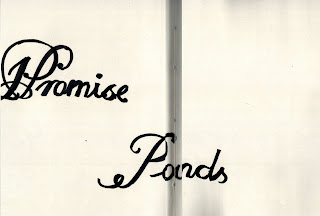Saturday, 28 April 2012
Wednesday, 25 April 2012
Alfred Jensen April 1977
One afternoon during the year 1921, I was walking down a street in San Diego,
California. I suddenly saw the edge of a young man's face, a nose. I called
out to the owner of the profile, "Karl, remember that I drew your portrait
in 1915, when we were children in school?" "Of course, I remember,
Alfred," he answered, "and I still keep the portrait as a remembrance
of our school days. That was 6000 miles away and six years ago, in Horsholm,
Denmark."
The edge of things, a profile, coupled with a past event, has always made me leap like an inspired diver off a board.
Edge events have occupied me for years - the edge of color as it is observed in a prism. Goethe wrote in Beitrage zur Optik, 1791, paragraph 33:
http://www.alfredjensen.com/home.html
The edge of things, a profile, coupled with a past event, has always made me leap like an inspired diver off a board.
Edge events have occupied me for years - the edge of color as it is observed in a prism. Goethe wrote in Beitrage zur Optik, 1791, paragraph 33:
The prism as an instrument, was looked upon with submissive awe and humility in the Eastern lands; so that the Chinese emperor gave himself the right to be the unique owner, as he insisted, by divine right of Majesty, to behold these beautiful appearances for himself alone. We in all ages from youth to old age look with wonder on the prismatic instrument because upon its use depends most of the color theories: therefore, to begin the study of color we must concentrate on this object.While the study of Goethe's color theory has engaged me over a twenty-year period, it is in the past three years that I returned to it, as well as new readings in contemporary physics and electro-magnetism and constructed the prism machine.
http://www.alfredjensen.com/home.html
Tuesday, 24 April 2012
Sunday, 22 April 2012
Saturday, 21 April 2012
Friday, 20 April 2012
Monday, 16 April 2012
1985 / Museu Picasso / Entrada Gratuita

Only one figure makes me uneasy, the humble-looking attendant (known as a guardadamas) behind Maribarbola, who looks transparent; Clark
Labels:
black hole,
drawing,
picasso,
spectre,
transcription,
velasquez
Sunday, 15 April 2012
Thursday, 12 April 2012
Tuesday, 10 April 2012
Monday, 9 April 2012
Saturday, 7 April 2012
flocking evolution / lapwing

boid
tierra
The hyperconnected leak information, always sharing something. At a minimum we share our presence on the network, this being the first sin that leads to a multitude of transgressions, revelation by derivation: Presence becomes location. Location becomes movement. Movement becomes activity. Activity becomes intent. Everything, from barely anything at all.
Mark Pesce‘s book, The Next Billion Seconds:
Friday, 6 April 2012
we had a fabulous feast at Sarlat
After all, there's the political context in France, and there are also personal relations, very complicated stories. The most complicated story arose when [the Situationists] came to my place in the Pyrenees. And we took a wonderful trip: we left Paris in a car and stopped at the Lascaux caves, which were closed not long after that. We were very taken up with the problem of the Lascaux caves. They are buried very deep, with even a well that was inaccessible -- and all this was filled with paintings. How were these paintings made, who were they made for, since they weren't painted in order to see seen? The idea was that painting started as a critique. All the more so in that all the churches in the region have crypts. We stopped at Saint-Savin, where there are frescoes on the church's vaulted dome and a crypt full of paintings, a crypt whose depths are difficult to reach because it is so dark. What are paintings that were not destined to be seen? And how were they made? So, we made our way south; we had a fabulous feast at Sarlat, and I could hardly drive -- I was the one driving. I got a ticket; we were almost arrested because I crossed a village going 120 kilometers per hour. They stayed several days at my place, and, working together, we wrote a programmatic text. At the end of the week they spent at Navarrenx, they kept the text. I said to them, "You type it" (it was handwritten), and afterward they accused me of plagiarism. In reality, it was complete bad faith. The text that was used in writing the book about the [Paris] Commune was a joint text, by them and by me, and only one small part of the Commune book was taken from the joint text.
http://www.notbored.org/lefebvre-interview.html
http://www.notbored.org/lefebvre-interview.html
Henri Lefebvre on the Situationist International
Interview conducted and translated 1983 by Kristin Ross
Printed in October 79, Winter 1997
Wednesday, 4 April 2012
leaky abstraction
The form of wood, for instance, is altered if a table is made out of it. Nevertheless the table continues to be wood, an ordinary, sensuous thing. But as soon as it emerges as a commodity, it changes into a thing which transcends sensuousness. It not only stands with its feet on the ground, but, in relation to all other commodities, it stands on its head, and evolves out of its wooden brain grotesque ideas, far more wonderful than if it were to begin dancing of its own free will. Marx 1867


Tuesday, 3 April 2012
Sunday, 1 April 2012
Subscribe to:
Posts (Atom)























